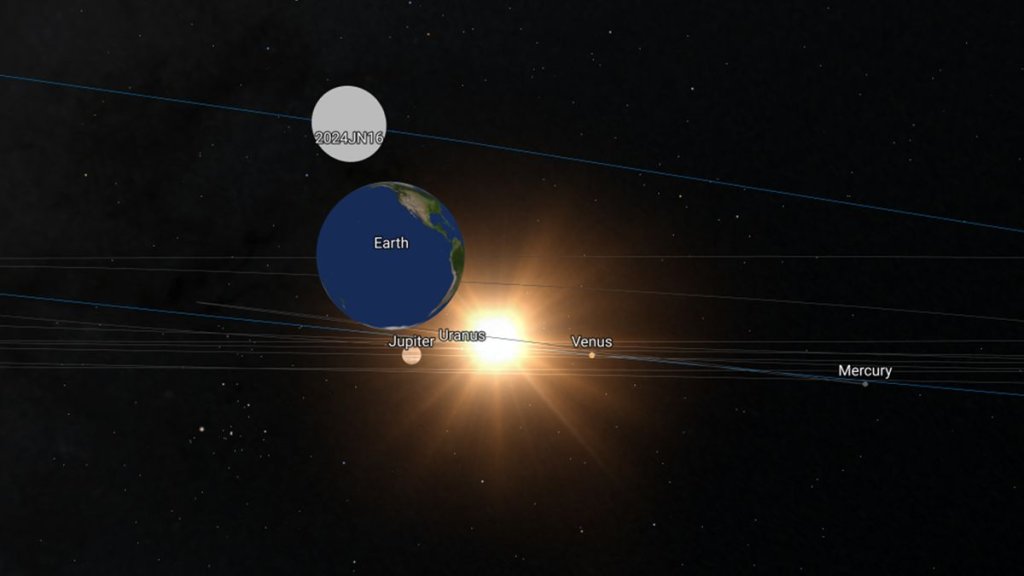
Car-size asteroid gives Earth a close shave in near-miss flyby (video, photo) (Image Credit: Space.com)
A small asteroid flew very close to Earth Tuesday morning (May 14), just two days after it was discovered by astronomers.
The asteroid 2024 JN16 is less than 15 feet (4 meters) wide — about the size of a car. It did not hit Earth but came within a mere 11,500 miles (18,500 kilometers) of our planet’s surface when it zipped by at 5:50 a.m. EDT (0950 GMT) on Tuesday, according to The Virtual Telescope Project.
2024 JN16 was discovered by amateur astronomer Gennadiy Borisov two days ago using the MARGO Observatory in Nauchnij, Crimea.
Related: Facts about asteroids

The space rock belongs to the Apollo asteroid group, whose orbits intersect with that of Earth. A famous asteroid from this group was the Chelyabinsk meteor, which was as large as a six-story building when it broke up over the Russian city of Chelyabinsk in 2013, causing a blast stronger than a nuclear explosion. Because the orbits of such objects put them at a risk of colliding with a planet or other asteroids, astronomers estimate that they survive for fairly short periods in our solar system — perhaps just 10 million years or so.
During its brush with Earth, 2024 JN16 was well within the orbit of the moon and half as distant as the shell of geostationary satellites, which circle our planet at an altitude of 22,236 miles (35,785 km).
Because it flew so close to Earth, the asteroid appeared to shine at magnitude 13 at its brightest and was therefore visible to telescopes. It is now more than 186,400 miles (300,000 kilometers) from Earth in the constellation Serpens, however, and can only be seen using long-exposure photography, according to The Sky Live.

This year alone, astronomers have found over 40 asteroids whose paths bring them closer to Earth than the moon’s orbit, the Watchers reported.
Four more asteroids — two of them as big as a house, the third as large as an airplane and the fourth the size of a building — are expected to approach Earth closely but safely on Tuesday, according to estimates from Asteroid Watch, a dashboard of near-Earth asteroids and comets managed by NASA’s Jet Propulsion Laboratory in Southern California.





